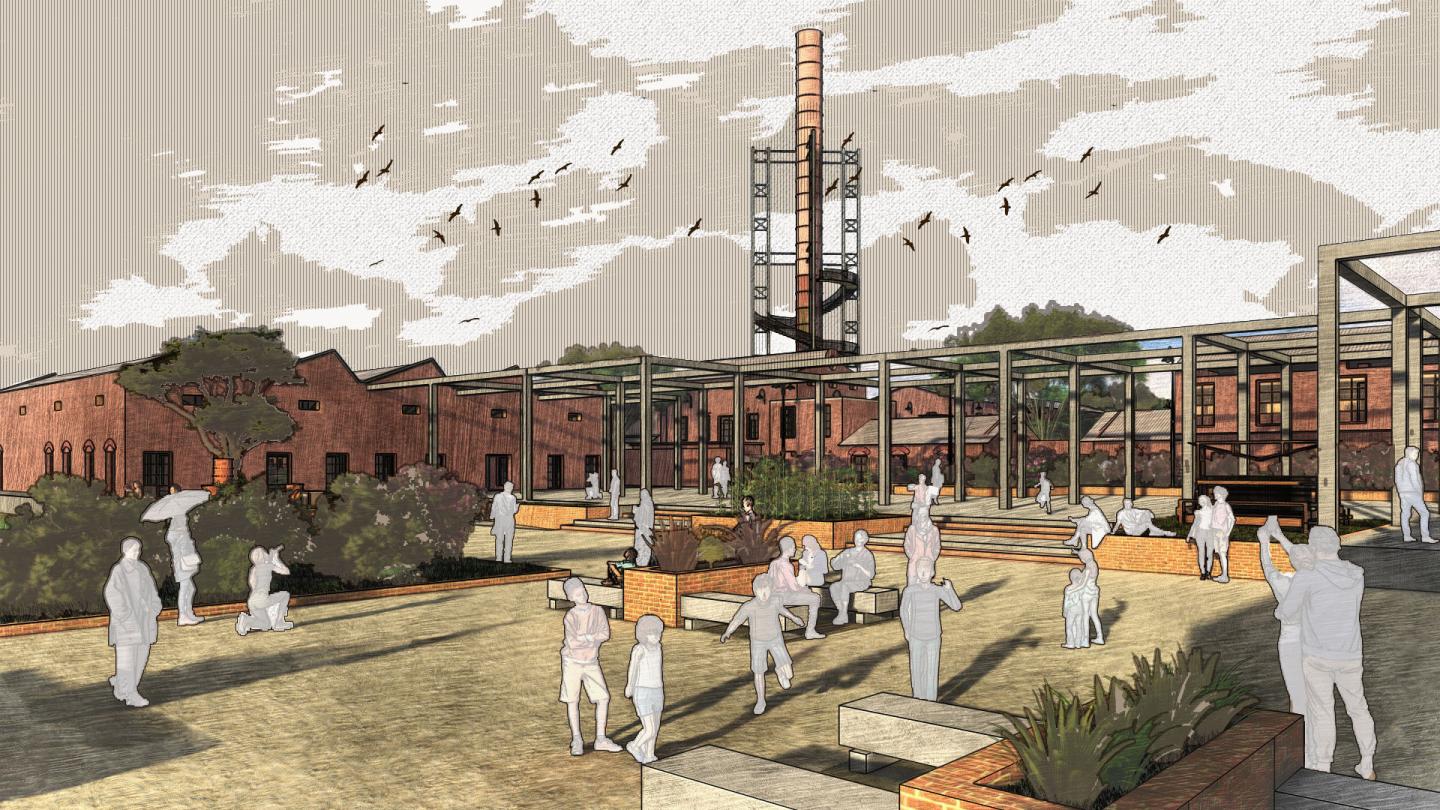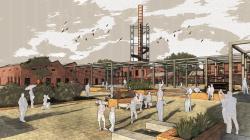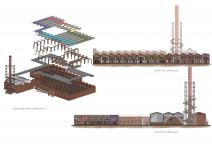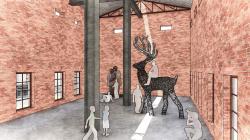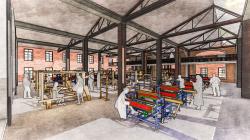Mohini Mill, established in 1908 by Mohini Mohon Chakraborty, was once the largest textile mill in Asia and a symbol of the industrial strength of the Swadeshi movement. Unfortunately, it closed down due to several reasons and has since fallen into neglect, becoming a site adorned with rust, dust, and overgrowth.
Urban sprawl has left little breathing space for the citizens of Kushtia, and the expansive grounds of Mohini Mill have suffered from encroachment and neglect. The proposed master plan aims to restore this historic site, preserving its legacy while giving it a new purpose. The vision includes transforming the mill into a center for culture, education, and small businesses that will benefit the senior citizens of Mill Para. The surrounding open spaces will be revitalized for social gatherings and relaxation. This plan presents an opportunity to breathe new life into Kushtia, honoring its past while shaping a brighter future.
Preservation & Renovation_ Roadways, Boundary wall & Mill Extension
The existing road will be maintained as a pedestrian entrance. Additionally, the boundary wall and guard room will be preserved for their historical significance. The renovation plan aims to reimagine the space by seamlessly connecting an administrative block, the revived Sandhya Samiti Theater, and a multi-purpose hall. A striking scaffolding pathway will link the administrative block and the theater, guiding visitors to a vibrant central plaza for community engagement.
Restoration_ Chimney & Waterbody
To restore the chimney to its original height, four large columns will be designed to symbolize heritage and pride. A bird’s-eye viewpoint will provide panoramic views of the site’s evolution. A retaining wall will preserve the water body, with a floating walkway allowing visitors to engage with its history.
Adaptive Reuse_ Spinning & Weaving Mills, Warehouses
The external warehouse will feature a souvenir shop showcasing handmade crafts from Kushtia. A new arched pathway will be added, offering rare books on the mill's history for reading.
The Mill Museum will repurpose an old spinning mill and substation, displaying historic machinery on the ground floor. A soakable green central space will be integrated to evoke feelings of the abandoned mill while gradually blending in nature. A new floor will showcase sculptures that narrate the mill's vibrant history through a timeline.
The internal warehouse is proposed to serve as a sculpture workshop for sculptors and their students, while the carding mill will become a workshop for painters and their students.
To honor the emotions of the senior citizens of Mill Para, a handloom appreciation center will be established in the remaining weaving mill, combining heritage and design with a weaving workshop and an exhibition space for showcasing finished handloom products. An open-air courtyard and elevated arched pathways will be included in the design, creating seamless connections between spaces. Sky blue and green glass windows will symbolize hope, enriching the visitor experience and celebrating local weaving traditions with a modern touch.
Instead of creating a landscape that reflects a "frozen image of past culture and economy," the project aims to offer a journey that blends aesthetics, emotional connections, and modern facilities. By preserving and utilizing the industrial remains of Mohini Mill, we can enhance the social lives of the community while celebrating its rich heritage. This initiative stands as a commitment to both honoring Kushtia's history and ensuring its future growth and vitality.
2023
Context:
The magnificent Mohini Mills in the Kushtia area are a century-old edifice that were formerly known for producing some of the finest fabrics without any flaws. It was one of the largest Textile mills in Asia, which was strength for Bengalese in Swadeshi movement, created industrial era in Bengal also created a new society a new culture, has now been totally abandoned.
Aim and Objectives:
Providing a pathway to connect past and present at the same time, respecting the history of the site to develop a new kind of culture with new functions and opportunities for enriching environmental, economic and social life.
Objectives:
• To provide a historical museum
• To provide e workshop for Artist and Handloom fabrics
• To provide public amenities
• To provide rentable shop
• To provide information other cultures that grown up in other site of Kushtia
Significance, Scope and Definition:
Abandoned Mohini Mill gradually ruining and with this vibrant past continuously disappearing. Appropriate reuse with new functions capable to take away from the way of death and reviving its vibrant past.
• Heritage site and infrastructure with historical significance.
• Economic conditions and development, impacts on social and cultural aspect.
• Community needs.
• Environment and climatic context.
Name- Papon Datta
Studio- X(Thesis)
Studio Master- Ar. Kanu Kumar Das; Shaila Sharmin;
Supervisor- Sarah Binte Haque
